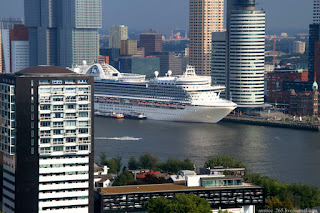Pizza in Italy - my impressions
sergiy
February 09, 2019
Pizza in Italy - my impressions.
Pizza in Italy is undoubtedly one of the most popular
dishes in this country (along with pasta and the famous Italian ice cream).
And, of course, traveling in Italy, I could not help but try this national
dish. And today I want to share with you my impressions.
Many of us, arriving in Italy, have already heard that no other pizza can match Italian. And so that, after the first slice, there is no disappointment, carefully select the place where to taste this famous national dish. Today, pizza production is on stream. Pizza in Italy is sold at every step. The only question is the quality of this dish.
There are many restaurants, pizzerias and street cafes
and snack bars, where you can buy pizza. And sometimes the elegant sign of the
place does not mean that here you can taste the most delicious pizza in the
city. Sometimes, in long, small, unremarkable pizzerias, huge queues are lined
up, since they serve exactly real homemade pizza, the preparation of which
takes place right before your eyes.
This homemade pizza is cooked in a wood oven. In
Italy, this is not uncommon. Dry heat makes the crust crisp, and the filling
allows you to remain tender and juicy.
Real pizza in Italy is cooked
at a temperature of 485 degrees and baked there for only 2 minutes.In street eateries, which are very popular with tourists, prices, of course, are much lower than in restaurants, but the quality leaves much to be desired. Very often in Italian restaurants there is an extra charge for a seat at the table (about 1-2 euro per person). And you will know about it only when they bring you an account. Therefore, if you do not want to overpay, then when choosing a place, be sure to see that it says: “NO CHARGE FOR SEATING” (without a fee for a seat). But since this often scares off tourists, many restaurants already refuse this additional fee.
Italian Pizza Varieties
Traditional pizza in Italy has a round shape. The main component of Italian pizza is Mozzarella (young cheese). Today in Italy more than two thousand types of pizza. Pizza is “stuffed” with anything: fish, ham, garlic, onions, peppers, mushrooms, eggplants, seafood, sausages, sausages, meat, greens, cheeses, dairy products and much more.
Traditional pizza in Italy is Pizza Margherita (Margherita), which includes tomatoes, basil, and, of course, mozzarella. Pizza Salami (with smoked spicy sausage) is very popular among tourists.
Pepperoni Pizza (with red and green pepper) is equally popular. Moreover, if the menu is written Pepperoni, then you will be served a pizza exclusively with pepper. It will not have any additives in the form of the same pieces of sausages, to which we are used to ordering Pepperoni pizza in Russian pizzerias. For example, I really liked Pizza con funghi e pancetta (pizza with mushrooms and bacon), and Pizza con tonno (pizza with tuna).














